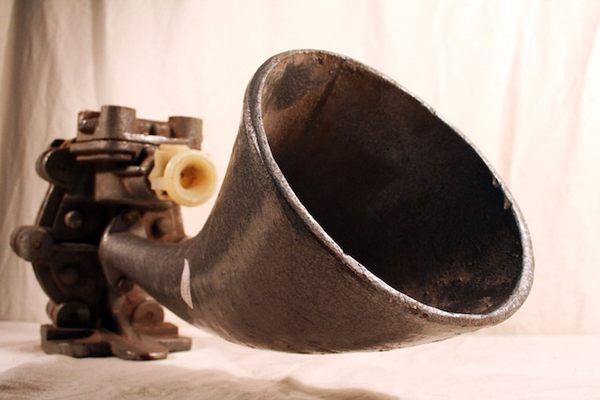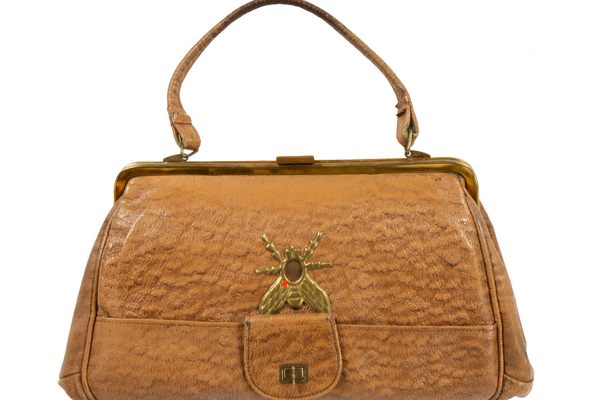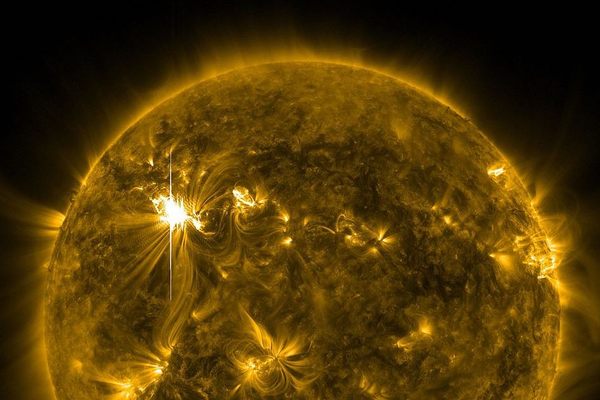A Cold-War Museum Gets the Perfect New Home—an Empty Cold-War Armory
Culver City’s Wende Museum is moving into what was once a secret military site.

For more than a decade, the Wende Museum’s collection of Cold War artifacts has been tucked away in a business center in Culver City, California. What started out as a small, personal collection of the museum’s founder, Justin Jampol, has grown to include 100,000 items of art, clothing, propaganda, technology, and other remnants of life in Eastern Europe and Russia during the Cold War. It had become clear that the collection needed more expansive digs in order to reach its full potential.
Now, after years of planning, the museum is opening up in its new home, a Cold War-era armory that had been left empty for decades. Atlas Obscura talked to Jampol about the new space, which seems like the perfect location for this unique collection.
What made you decide to make this big move, into an old armory?
Well, we’ve been around for 12 years. I would say it was 2009 when we produced something called the Wall Project, in which we brought 10 segments of the Berlin Wall to L.A. and produced a street art project. We had several thousand people out in the street at midnight. All of a sudden it felt like, hey, this is something people are interested in and that, if there was an opportunity to have a wider platform, we could produce projects above and beyond what we could do because of our limited size and location and logistics.
I mean, we’d been in the back of a business park for 12 years. I think we made the most of it, but we did as much as we could do with that format.

How did you find the new space?
Several years ago, I was at a Parks and Rec meeting at the Culver City Senior Center. That probably tells you something about my social life at that time. The meeting was about what to do with this block of city-owned property, that was in limbo because it had been abandoned and overlooked in some ways. After the meeting, community activists named Dan O’Brien and Judy Richter took me across the street and said, “Hey, look, we have to show you this building.”
I had lived very close by to it, and I had seen it all the time. But it’s one of those places where unless you really looked, you wouldn’t even notice it, because of decades of painting and grime. As soon as we peeled back the layers of the place and saw it in its raw form, it looked amazing. It’s a building from 1949, it was used as a National Guard armory, and it had been left to deteriorate. But the bones were really good.
It’s a Cold War building, and this is a Cold War museum. It’s just so poetically aligned. It was a building to prepare for war, and now it’s being used for more peaceful means. Now you have a Eastern European and Russian collection—the so-called the bad guys—whose material culture is inhabiting the space.

Once you had found the armory, what did it take to transform it into a museum?
First of all, because it was a city-owned building, it was even more critical that we gather with our neighbors to understand what this is, what we had in mind, what the vision is. We decided to be entirely free—and so we’re free to the community. There are going to be special classes and hands-on courses for Culver City students, days for the community, and free movie nights. That was a multi-year process, just to do that.
The building was just a shell. Everything had to be built-up from scratch. Another interesting part of the Cold War history is that—there was a crazy issue with zoning. Most of the urban landscape had been zoned a hundred years ago, commercial here, residential here…This was a secret site. It was totally off the grid, and it was never zoned. We went through this unusual process of having to zone it from scratch, which probably hasn’t been done in decades.
It’s every curator’s dream in terms of footprint. It’s one large exhibit and then side rooms, which we call laboratories. They focus and specialize on particular collections. The whole idea behind this was, as opposed to the Cold War, which was opaque and about secrets, this is all about transparency and accessibility. For example, we have a main exhibit space but on the other side it’s flanked with long hallways of the full collection that’s exposed and can be seen through the glass. Every laboratory you can peer into.

When you were renovating the building, did you find any interesting history?
It’s kind of crazy—our founding board chair, Wayne Rakovitch, was stationed here when he was in the Guard in the ’50s. He knew the building very well. It has two above-ground bunkers, one for people, one for guns. They were built to withstand a Soviet strike, with atomic bombs, dropped by a plane.
By the time the building was built out in the 1950s, it was obsolete. There was a hydrogen bomb. But it does have an above-ground air-filtration system to filter out the radioactive air. It of course never worked to begin with. It’s part of the alluring and intriguing story of this place.
What are you going to be displaying in the armory that might have been hidden in storage before?
Even the last couple of weeks have been amazing. Things that have been in storage for 10 years, that I might have acquired in a far-off land a dozen years ago, I’m seeing again for the first time. It’s been an amazing experience to reflect back on where that came from and the story of how it got here. Now, it can be seen.
The aim of the archival shelves that are accessible is to spotlight collections, ranging from the secret police equipment to uniforms to ceramics and furniture. You’ll be able to see a good chunk of the collection that we couldn’t show at the previous place. We’ll also have a 25,000 volume library here.

Now that you about to open the new space, what’s your next big plan?
It’s a big moment for us. Our opening celebration is on Saturday night. There’s an open house on Sunday. Then, we open up.
There’s a big, long, six-month process to fully move and install the collection. We have our first exhibit here up now, but there will be more to come.
When we were in the other space, the collection came and built up over 12 years. It’s different when you have to move in, like, 12 days!



























Follow us on Twitter to get the latest on the world's hidden wonders.
Like us on Facebook to get the latest on the world's hidden wonders.
Follow us on Twitter Like us on Facebook